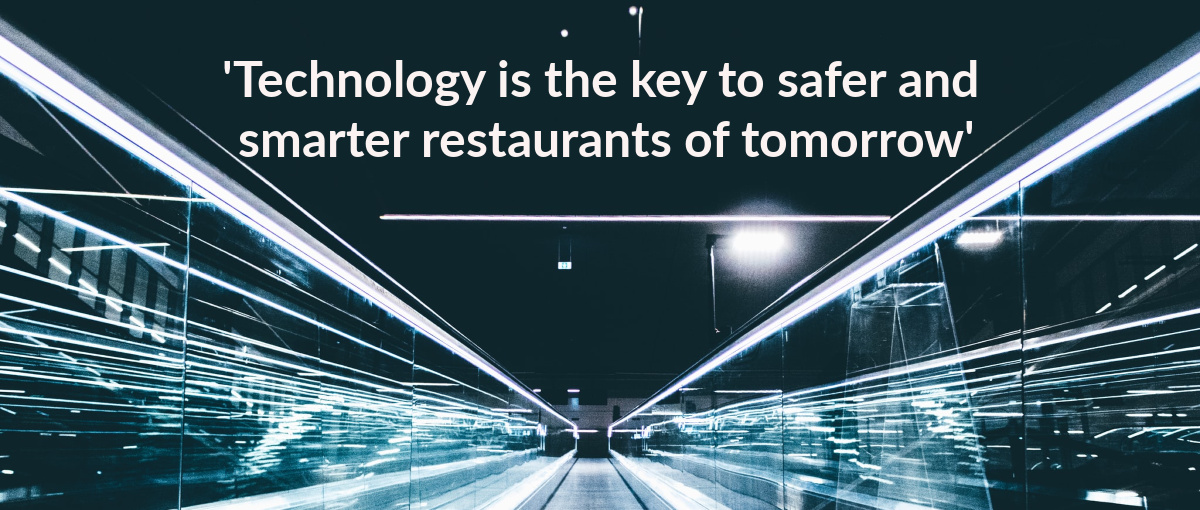Reinventing a Safer, Personalized Restaurant Experience through Facial Recognition
3 Min Read By Dr. Jau Huang
Coming out of the COVID-19 pandemic, everyone is wondering what “regular life” will look like once cities have all reopened and people begin to resume some of their favorite activities like traveling and eating out. People across the nation are voicing eagerness to resume their social activities, and comfortably and confidently return to their favorite bars and restaurants.
The dining experience of yesterday, however, with packed houses and quickly rotating tables is looking like less and less of a possibility moving forward. To safely reopen and resume business in this cherished industry, we’ll need to look to new tools and technologies to help adapt to our “new normal” while continuing to provide and exceed the levels of service that keep customers coming back.
Luckily, biometric technology like facial recognition, offer benefits that go way beyond helping us enhance dine-in safety. It can empower more personalized diner experiences, transform some of the least pleasurable elements of eating out (like paying the check), and help increase patron loyalty. Let’s walk through some of the most transformative technological use cases for restaurants of tomorrow.
Contactless Payments
One of the many repercussions of the current pandemic is that people are reconsidering the way they handle cash and credit cards and the options available for making payments when eating out or shopping. Not only is paying one of the least sanitary parts of the dining experience, but it’s also usually the least enjoyable for diners.
Facial recognition technology, when integrated into the payment process, can not only lessen the amount of physical contact and germ-spreading, but also makes the experience more efficient by instantly scanning a guest’s face for verification and payment.
Cash and credit card holding diners are often stalled in the check-out process, awaiting change or running through the multi-step credit card machine requests for pins and confirmations. Payment enabled through facial recognition empowers a touchless, swifter and more enjoyable checkout experience. And, with accuracy that can be up to 100 times better than other biometrics, never mind the use of a 4-digit pin, using facial recognition can dramatically reduce the risk of payment card fraud.
Determining Proximity and Spatial Capacity
In the wake of COVID-19 and at the behest of agencies like the FDA, customers and restaurant employees are now hyper-aware of staying within the 6-foot guidelines of social distancing. However, in most cities, restaurants still haven’t reopened to full capacity and haven’t tested the waters on trying to keep eager diners physically spaced on a busy night.
In this case, facial recognition technology can act as a social-distancing watchdog – identifying where each person in the room is and what proximity they have to other diners and restaurant staff. This capability helps restaurant employees gauge and control the capacity of spaces, while also ensuring diners and staff can stay safe while still enjoying a normal restaurant experience.
In fast casual restaurants like Chipotle, where people are often standing in long lines in close proximity to others to order their food, this technology can enable queue and capacity control more efficiently without sacrificing a full staff member to line management duty.
Customer Loyalty and Personalized Dining
In recent years, personalized experiences have skyrocketed in popularity. Consumers value having personal experiences with their favorite waiters, baristas, bartenders and more, and expect to be treated uniquely and not just as another guest.
Facial recognition technology is an impactful tool creating personalized dining experiences that reward loyal customers and keep first-time guests coming back. Opted-in diners can instantly be recognized as VIPs upon entering a restaurant and enjoy the extra perks and service. Due to its ability to identify broad emotional responses, the same facial recognition technology that empowers contactless payments, can also identify the weekly regular who prefers his burger extremely rare, without lettuce or tomato and ensure his order is always made to preference. It can provide chefs detailed and valuable insights into which menu items guests are most enjoying by aggregating and anonymizing emotional responses of diners consuming certain dishes.
For fast casual and fast restaurant chains, this immediate identification can also mean an exponentially more efficient customer order and checkout time, as individuals no longer have to go through the motions of selecting dishes and options and instead can walk in and pay, with their dish of preference immediately registered and in the works. Even better, customers who make their order online can be instantly greeted and handed their meal the moment they walk through the door.
Technology Is the Key to Safer and Smarter Restaurants
With the outbreak of COVID-19, things are bound to change moving forward, including the way we eat out, and how we experience dining. Technologies like facial recognition, however, give us the opportunity to reinvent old processes and come back stronger than we were before. Restaurants of the future can be empowered through technology like facial recognition to maintain safer, more efficient and enjoyable dining experiences for guests and staff.


